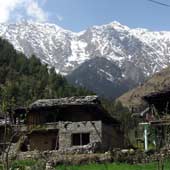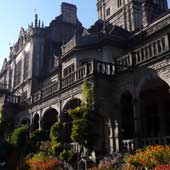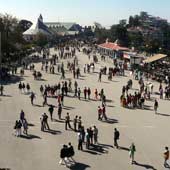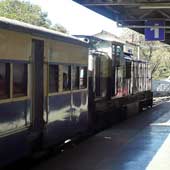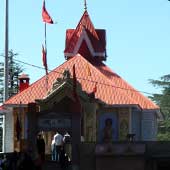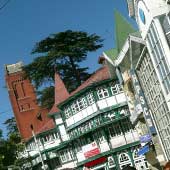ShimlaIndiaGuide.com
When to Visit Shimla?
Shimla's climate can be best described as having mild summers and cool winters with the height of the monsoon season in August.
The best time of year to visit Shimla is after the end of the monsoon season until the first snowfalls (October until December) and during the spring months March to early May.
Few travellers should consider visiting the interior of India during the hot season (June to August) but Shimla is significantly cooler than the plains surrounding Delhi.
Shimla Overview
Shimla is located in the foothills of the Himalayas and the routes connecting the city skirt around the sides of massive mountains with sheer cliffs to one side and deep valleys to the other.
These roads are very susceptible to landslides during the monsoon season so road travel is best avoided at this time of year. It is not recommended to travel north from Shimla in the monsoon season as there can be major damage to the roads and repairs continuing for weeks after the end of the rains.
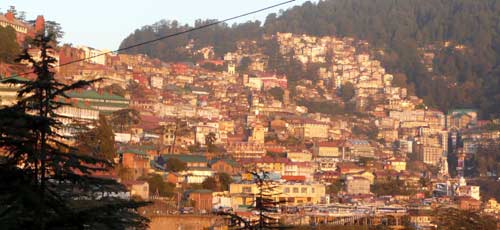
Shimla at sunset
Shimla in the Winter
The first snows of the year are traditionally expected in December but increasingly the arrival date is later each year. Shimla is rarely cut-off by the snow but roads becomes perilously dangerous.
Daytime average temperatures during the winter months usually hang above zero, so it is cold but not unbearable. The mountain air is the freshest and most invigorating during the months, while the oppressive fogs from the plains of Delhi unable to reach the heights of Shimla.
Shimla in the Spring and Summer
Spring is possibly the best time of year to visit Shimla as the colour returns to the hills and temperatures increase to pleasant levels. Spring is the best time for hiking in the mountains as foliage and flowers bloom. Daytime temperatures dramatically increase during May and this signifies the start of the hot season.

The daytime maximum temperature in Shimla during the hot season only reaches 28C, which is significantly cooler than the plains of Delhi which become unbearable due to high humidity.
If you must visit India during the summer Shimla is a good starting destination as the high altitude makes the region slightly cooler and less humid. This cooler summer temperature was what enticed the British Raj to bring their summer administration to Shimla.
Shimla the wet season
As the intense summer sun heats the Thar Desert the low-pressure draws in moisture laden air from the Arabian Sea and northern India is hit by the monsoon season.
The most intense rains are at the start of the season (July and August) and gradually fade off through September. Shimla gets less rains than many other Indian cities but it is still not a good time to visit.
Shimla India Navigation
|
| ||||||
|
| ||||||
|
| ||||||
|
|
